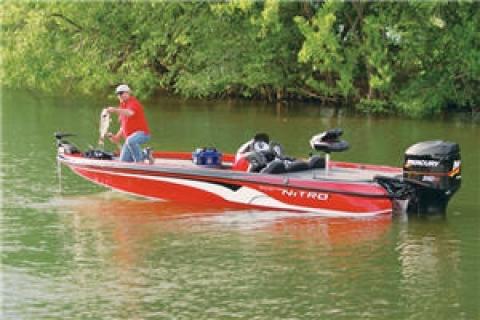
 When grading cast-n-crank lures, lipless crankbaits score high, producing bass bites with little input from the angler on the other end of the line. A more refined approach — one that provides modifications in rigging as well as application — allows the rightful utility of the lure to be fully experienced.
When grading cast-n-crank lures, lipless crankbaits score high, producing bass bites with little input from the angler on the other end of the line. A more refined approach — one that provides modifications in rigging as well as application — allows the rightful utility of the lure to be fully experienced.
Pennsylvania-based touring pro veteran Dave Lefebre too counts on the wiggle of lipless crankbaits to pry bass up-and-out of weed-covered flats. One of his more effective tricks was inspired by in-boat safety.
"Throughout the year I take out folks that don't have a lot of fishing experience," says Lefebre. "When you're dealing with multi-hooked lures, things can get dangerous."
Lefebre began removing the belly hook on lipless crankbaits to minimize the amount of razor-sharp projectiles. Not only did it make the lure safer to cast, he discovered he could make strike -stimulating weed contact with little fouling.
"Lipless crankbaits run nose-down, but that belly hook is still the first one to gather up grass," notes Lefebre. "It didn't take long, fishing the single hooked lure, to realize we were hooking just as many fish."
As was noted, emerging weedbeds, deeper vegetation that has a zone of open water above the uppermost tips, is an ideal situation in which to fish a lipless crank.
"I take a pretty straightforward approach to fishing a lipless crankbait over emerging weeds," says Florida-based bass pro Bernie Shultz. Straightforward perhaps, but not without it details.
Shultz uses a fairly heavy baitcasting rod with a fast tip, one capable of ripping the bait free as soon as he detects contact, preventing the lure from balling up with grass. He makes long casts that launch the flat-sided bait past target areas such as weed edges and openings within the cover.
Line diameter is another tool Shultz uses to restrain the running depth of the lure. Typically he starts with 15-pound test Sufix fluorocarbon line. In areas where beds of eelgrass, milfoil and hydrilla reach closer to the surface, he'll switch to 17- or 20-pound fluorocarbon, relying on the thicker diameter of the line to keep the lure closer to the surface.
- 4497 views

